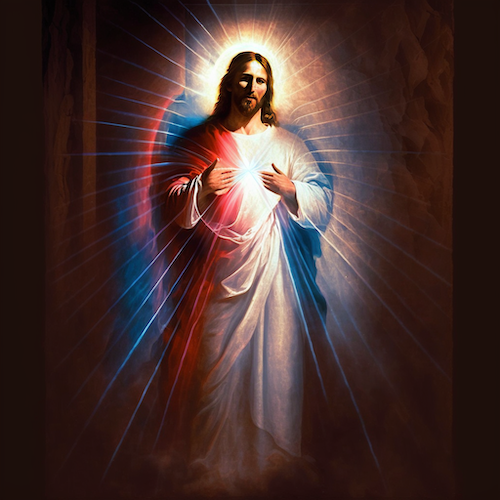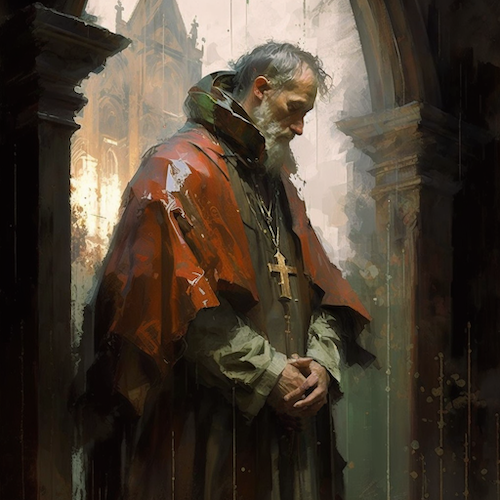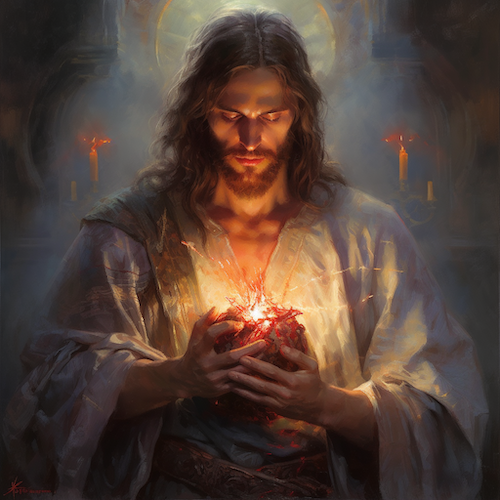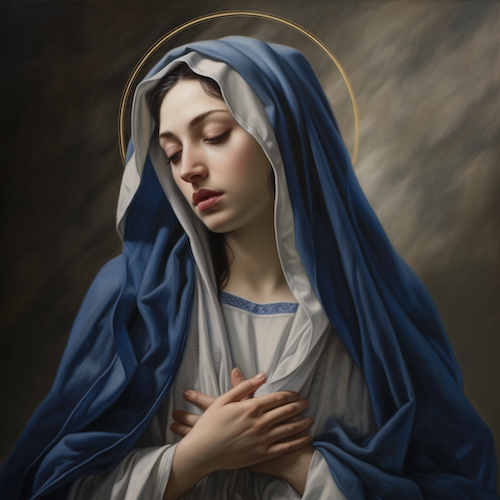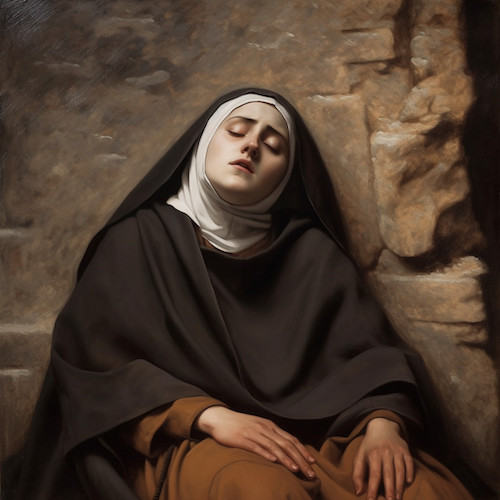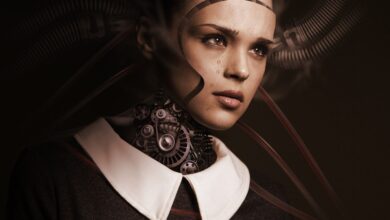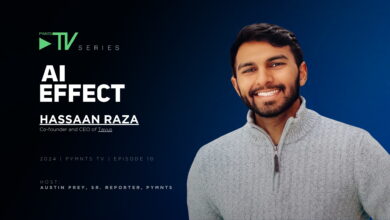Saints come to life through artificial intelligence

Artificial Intelligence (AI) promises tremendous technological advances in many walks of life but also poses unprecedented challenges.
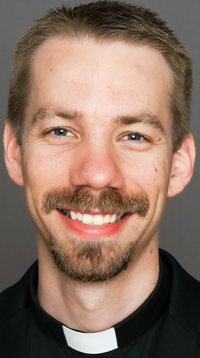
AI is likely to make entire career paths disappear. AI-fueled plagiarism is a growing problem, and the new technology has been used by some to subtly manipulate images of real people to embarrass and harass.
But what if, amid all of AI’s potential drawbacks, it could be harnessed for uplifting, artistic purposes, perhaps even religious goals? Julian Ahlquist and Father Timothy Sandquist had such a vision, and it resulted in their collaborating to produce vivid images of Catholic saints using AI.
Ahlquist, a philosophy and debate teacher at Chesterton Academy in Hopkins, and Father Sandquist, parochial vicar of Holy Family in St. Louis Park and chaplain at Chesterton Academy, have published thousands of AI images of over 300 saints since they commenced work on this project a year ago.
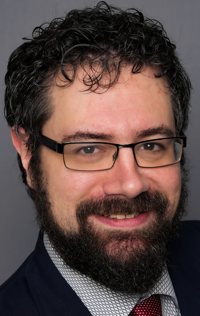
Their images are freely available under the name “Generation of the sAInts” on Reddit and Instagram, and Ahlquist has also undertaken several commissions for such work. The two generally post images of saints on their liturgical feast days, Father Sandquist said.
They use a web platform called Midjourney to produce these images. Father Sandquist explained that the platform is primarily directed through text prompts, which can be as simple as typing in “a painting of St. Therese.” However, he and Ahlquist tend to use much more detailed prompts, which suggest an artistic genre, style, lighting and mood, along with instructions that steer and modify the results to reflect characteristics such as age, complexion and bearing. They also use image prompts — existing images of a saint attached to the text prompt — which the AI will reference for “inspiration” when generating the new image.
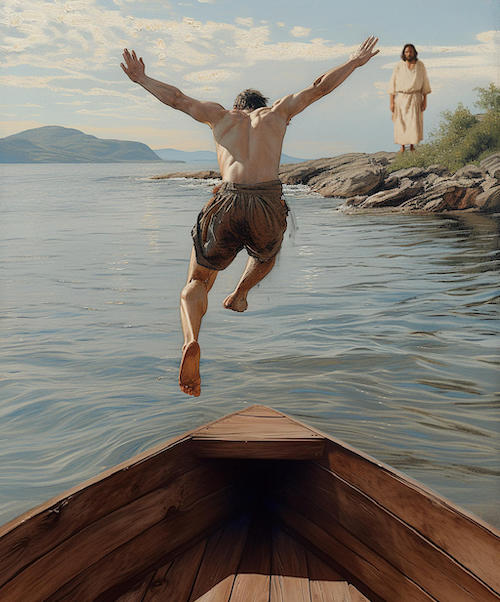
“The thing I love most about making this art is that it allows me to share with others more of what I find beautiful and inspiring about the saints,” noted Father Sandquist.
He gave an example that occurred on a school retreat he recently led.
“I wanted to help students understand that love is at the center of our faith by highlighting how Peter flings himself into the sea to swim to Jesus in John 21,” he said, adding, “I couldn’t find any high-quality paintings online that depicted the eager and childlike affection that led Peter to do such a thing, so I made one myself.”
He created such an image using AI. “It wasn’t perfect,” he explained, “but it expressed exactly what I wanted it to.”
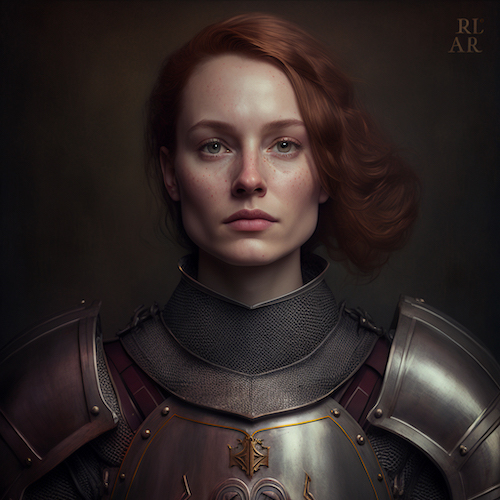
Ahlquist put it straightforwardly: “My goal is to get more good religious art out on the internet, providing images in which eternity touches our present time a bit more.” Father Sandquist emphasized that “from a purely visual perspective, AI art is not less beautiful than most manmade art and is often much better.”
Ahlquist has been a digital artist for 20 years, and Father Sandquist has had an interest in digital photography since high school. Both were motivated to pursue their AI saints work because they believe art has a unique power to inspire religious life, but good, contemporary religious art is often hard to find.
“High-quality images of saints are often from the distant past,” remarked Ahlquist, adding that present-day efforts “often lack drama and popular appeal.”
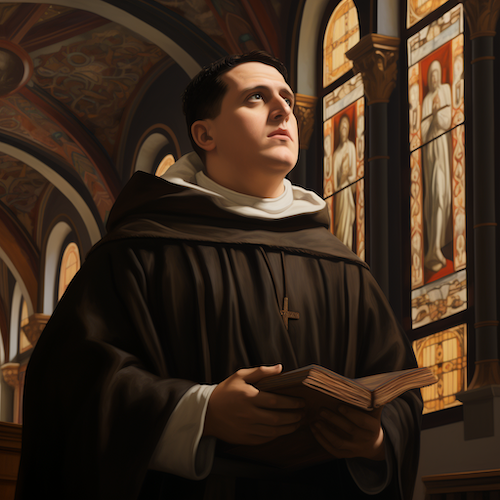
“I always seem to see the same four or five paintings of St. Thomas Aquinas,” observed Father Sandquist, “presumably because there are few other good ones to choose from.”
“It is surprising how much saint art I still see nowadays that is a 1920s rosy cheek, ‘porcelain-doll style,’ which I don’t particularly find inspiring,” he added.
Ahlquist noted that the AI tool allows him to combine popular modern artistic styles with images of Catholic saints. “I find inspiration in many styles, including Art Nouveau, photorealism, various kinds of watercolor, and even fantasy video game art.”
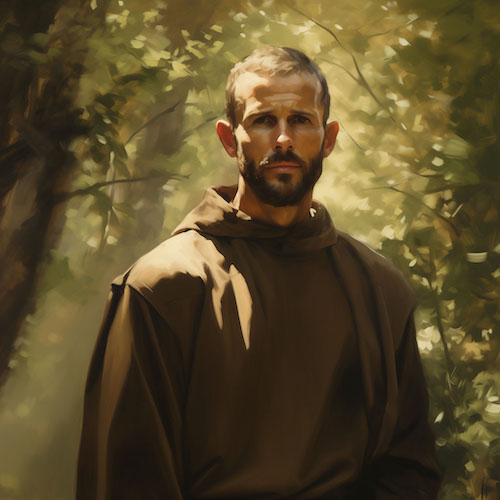
While the response to these AI-generated saint images has been generally positive, Ahlquist notes that there are critics as well. While some concerns lack foundation — allegations that AI is intrinsically evil, or influenced by demons — others raise important questions, he believes.
One common criticism, he said, is that AI-generated images are not true art because they lack the essential element of human creativity, and because the pictures are not original — but consist instead of a compilation of existing web images.
Ahlquist disagrees that the human element is missing. He points out that human beings created AI and are constantly training it through trial and error.

“In order for me to come up with a high-quality image of a saint,” he remarked, “I must carefully choose the prompts, constantly refine my inputs through dozens of preliminary iterations of the image, correct and revise individual aspects of images, and use an artistic sense to select the final, best image out of dozens or hundreds produced.”
The two also disagree with the claim that the images are not sufficiently original to be labeled art, because they are derived from existing images.
Ahlquist emphasized that the final saint images he produces are dramatically different from any prior images in existence.
“Artists build on prior knowledge and prior works of art, and in an analogous way, AI art does the same,” pointed out Ahlquist.
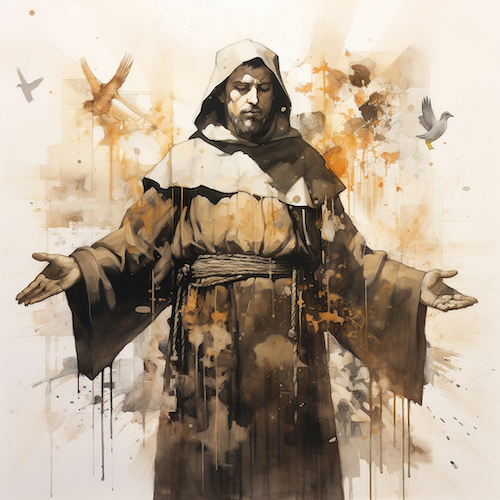
“Often people think that AI is just cutting and pasting other pre-existing images together,” added Father Sandquist, “but that is not how the technology works. The AI model was trained on millions of images with text descriptions in order to acquire the ‘rules’ that it uses to build entirely new images from the ground up.”
Another question is whether AI images of saints, though they depict a religious image, are intrinsically less sacred. Would it be appropriate, for example, to display an AI-produced saint image in a church? Father Sandquist does not believe so. He put the question in a larger context, saying he would hesitate to use any digitally-produced art in church settings.
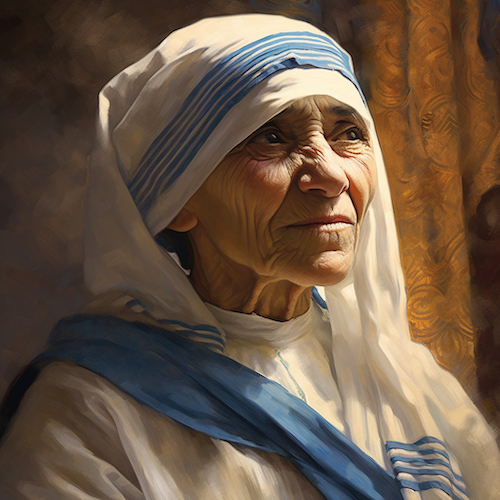
“There is something less sacred and incarnational about art that is so many steps removed from its human author,” he observed, adding that “even genuine sacred art is experienced as less sacred when it is projected onto screens.”
Ahlquist agreed that art must have a sacred quality to be used in sacred spaces. But he believes this is largely a question of parishioner perception and suggested there may be varying, legitimate perspectives on this question. As a result, he said, it is an issue best resolved by the bishops on a prudential basis.
Ahlquist observed that he and Father Sandquist still have a long way to go before they are finished with their AI saints project.

“It’s estimated that there are over 10,000 saints, so at our current rate we might finish them all in roughly 25 years,” he said with a wry grin.
Ultimately, these two believe that, like the internet and many other inventions, AI is a powerful tool that can be used for good or ill but is itself neutral. Father Sandquist quoted G.K. Chesterton in this respect: “There are no bad things, only bad uses of things.”
Ahlquist agreed. Noting the proliferation of pornographic images on the web, he concluded emphatically: “Catholics need to jump on this image-creating technology and do it right. If good people don’t use it wisely, it may be left to less morally-guided people who may turn AI to bad, even wicked ends. Let’s claim this technology now.”
THE CHURCH AND SACRED ART
The Catholic Spirit put the question of whether AI-generated images may be used in the Church’s liturgy and buildings to Father Tom Margevicius, director of the Office of Worship in the Archdiocese of St. Paul and Minneapolis.
He responded that the question is “frustratingly slippery to answer.” Father Margevicius noted that, largely because the technology is so new, the topic is not dealt with in the Code of Canon Law, liturgical norms, or any other ecclesially binding documents of which he is aware. “I haven’t even heard of any individual bishops issuing norms for their own dioceses in this regard,” he said in an email.
Until greater legislative clarification is promulgated, Father Margevicius said it is best to rely upon the pastoral judgments of those individuals responsible for their situations.
“If a pastor or school chaplain charged with responsibility for the decorations within the church or chapel determines a piece of AI-generated religious art is suitable in that setting,” he noted, “he may cautiously do so, granted, of course, that any lasting change to the appearance of a public worship space, including the erection of new statues, paintings, furniture, or pieces of art, must be approved by our archbishop according to Archdiocesan Policy 216.III.A.4.”
For a deep dive into the theology of sacred art itself, Father Margevicius recommended the Vatican II document on the liturgy, “Sacrosanctum Concilium,” at especially numbers 122-130, and the Catechism of the Catholic Church, numbers 250-2503.
Father Margevicius also noted Pope Francis’ timely reflections on the ambiguous employment of AI in his Message for World Communications Day.
Click any image for gallery
